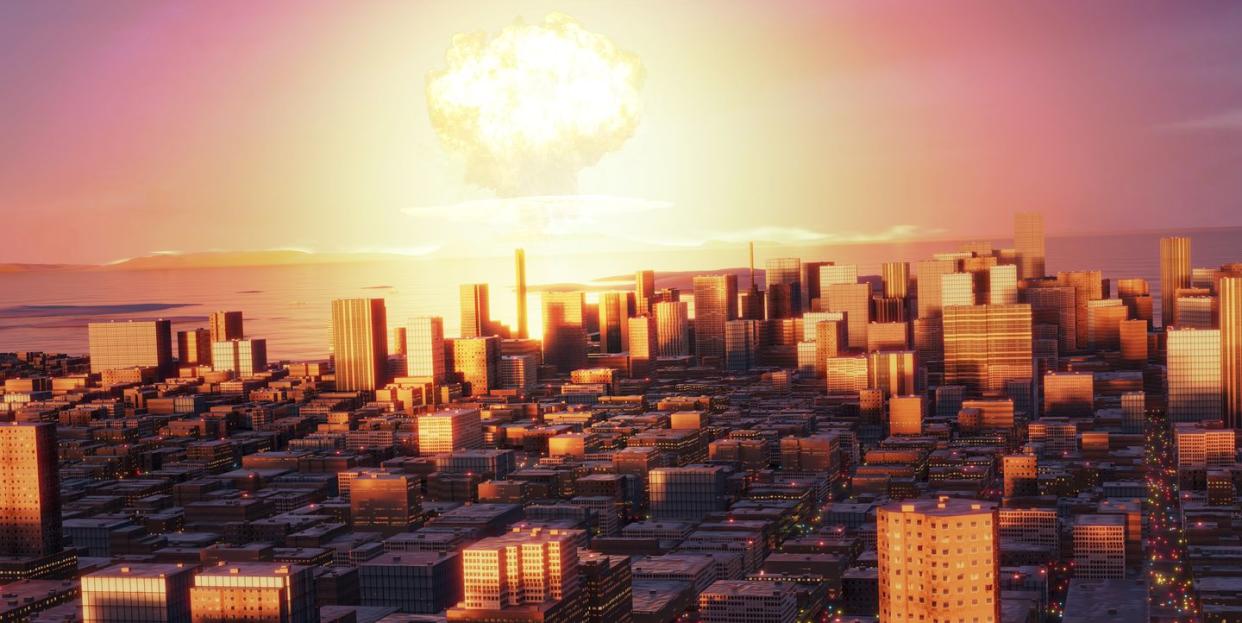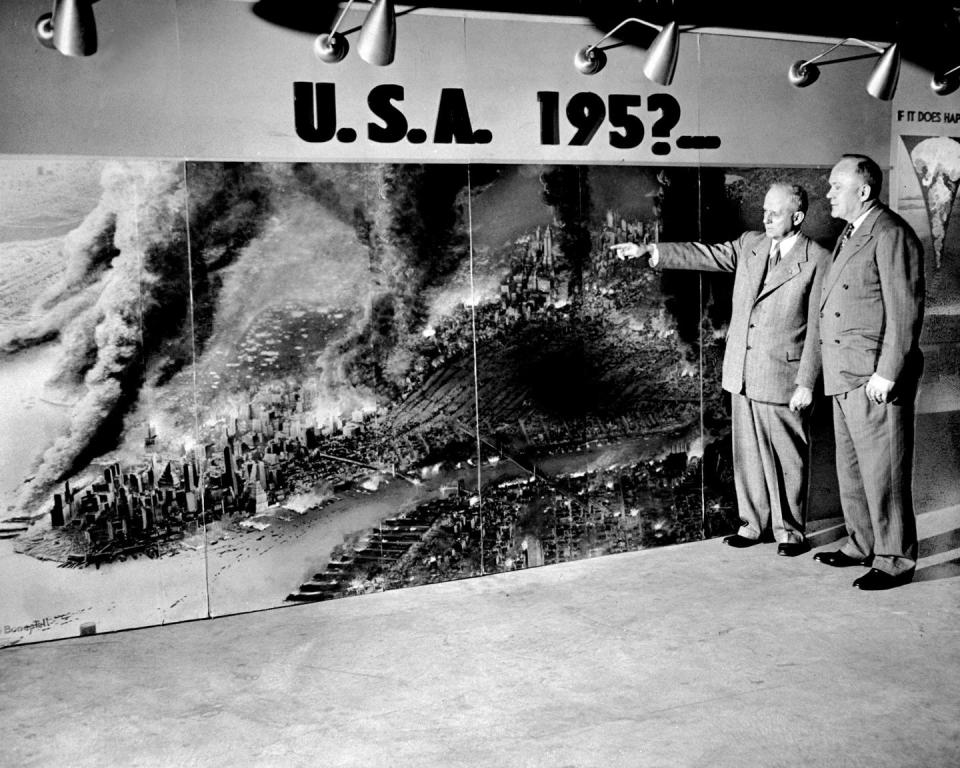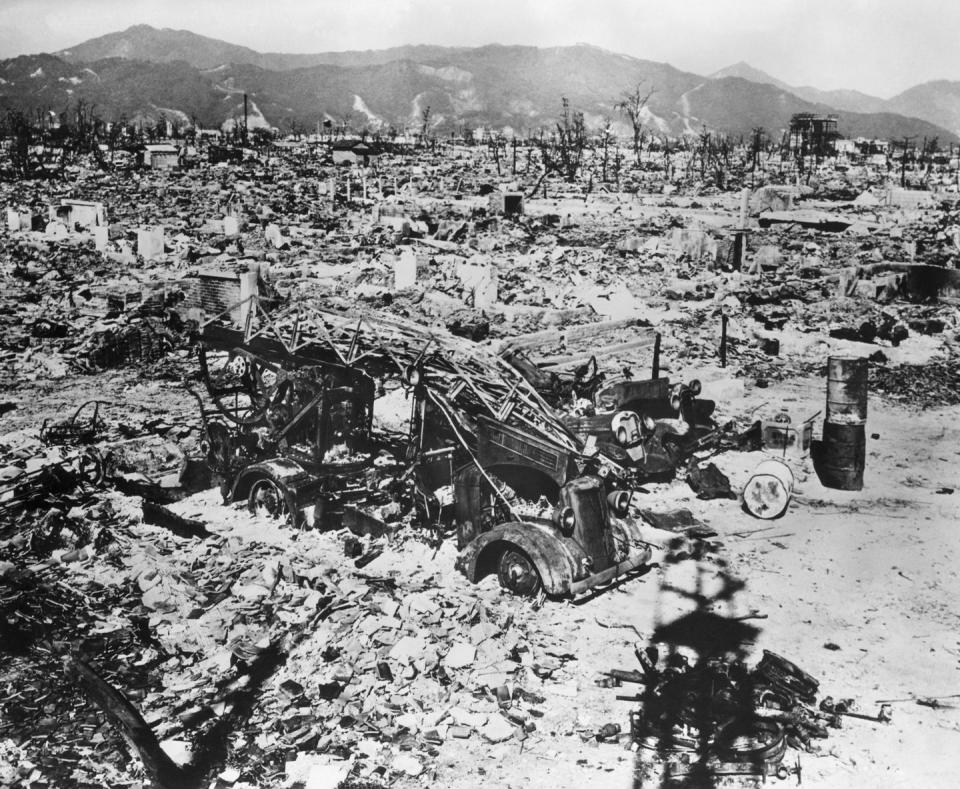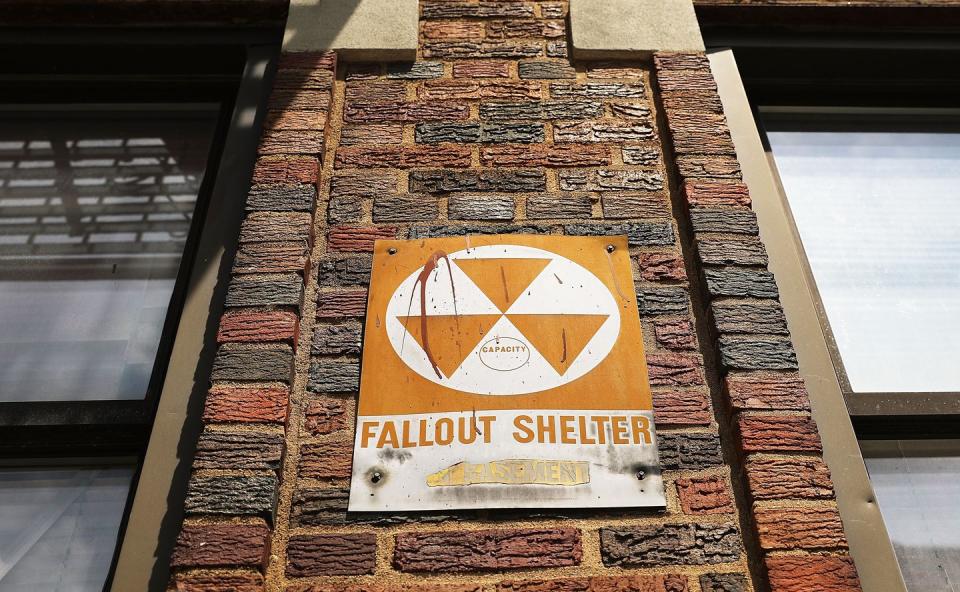NYC Officials on Surviving a Nuclear Attack: ‘You Got This!’

New York City officials uploaded a video to YouTube on Monday describing how citizens can survive a nuclear attack.
The video features a smiling presenter who offers less-than-useful advice on survival in the event of nuclear war.
It’s just the latest in a long line of government-created public safety announcements on nuclear war.
A new, oddly cheerful video directed at New Yorkers explains what to do in the event of a horrific thermonuclear attack—or at least, it tries to. The video, produced by the city’s Emergency Management department, is a well-intentioned, but abstract video with a strange, breezy tone. It offers the bare minimum in marginally useful information for surviving what would undoubtedly be the single worst day in the history of mankind.
The video (below) starts with a calm, confident presenter superimposed over a computer-generated New York City brownstone. “Don’t ask me how or why, but the big one has hit,” she says. This sets a bizarre tone akin to a television commercial for financial services, oddly detached from the horrific realities of thermonuclear war. NYC Emergency Management, for its part, describes the video as sharing, “important steps for New Yorkers to follow if a nuclear attack occurs.”

“The messaging is not bad. [New York] is trying to do something useful, but it’s all very abstract and runs counter to what people expect in a nuclear attack,” Stephen Schwartz, nonresident senior fellow at the Bulletin of the Atomic Scientists, tells Popular Mechanics. In other words, people expect blinding flashes of light, an overpowering blast wave, and widespread destruction—none of which is actually mentioned in the video.
The video offers just three steps to surviving a nuclear attack: get inside, stay inside, and stay tuned. These rules seem to have been created without any consideration for unique circumstances surrounding an actual nuclear attack, and could easily apply to an earthquake, hurricane, or zombie apocalypse. It also refers to the attack as “the big one” as though that is what everyone calls nuclear war; in fact, the term is commonly applied to the looming massive earthquake threat out west.
“It’s difficult to put everyone’s expectations in a 90 second video, but it doesn’t build on people’s knowledge of what nuclear weapons can do, and in that respect it is not useful,” Schwartz says. “I’d hope this was a work in progress.”
✅ Get the Facts: In the Event of Nuclear War
In the event of an all-out nuclear attack, New York City (or any other American metropolitan area) would be a terrible place to be. An attack on both military and civilian targets in the United States would involve 2,031 thermonuclear warheads detonating on American soil, killing as many as 62,471,000 Americans. New York City and the surrounding area would be blasted to pieces by no less than 12 Russian thermonuclear weapons, with bombs targeting federal reserve bank buildings, energy-producing utilities, communications hubs, and airports.
In this scenario, Manhattan would be completely destroyed. A fireball of up to one million degrees Celsius, the temperature of the interior of the sun, would incinerate a significant number of the city’s buildings and present a fire risk to the rest. Blast waves over about 40 percent of the city would be powerful enough to wipe even concrete buildings completely off the map. Thick, invisible layers of radioactive fallout would drift across the island, in many cases killing up to 95 percent of exposed persons.

The PSA closes with a cheerful “you got this!” but in truth nobody in New York City will “get it.” In the event of an all-out nuclear attack on the city, almost everyone will die. It will easily be the worst day in the history of humanity, and those that survive may come to envy those that don’t.
What could have made the video more useful? Schwartz says that if the advice was viewed in the context of a small nuclear attack using a low-yield nuclear bomb or “dirty bomb,” either of which would affect only part of the city, it would make more sense. Telling the public to remain indoors would not only help protect them from radiation, but would keep people off the roads at the same time first responders and other emergency services personnel were streaming into the city. Yet the video lacks that kind of nuanced information.
Schwartz also believes the video would also be useful to those in the suburbs and beyond, downwind from New York City and other major attack sites—areas unaffected by heat and pressure damage, but still under threat from radioactive fallout. In that sense, Schwartz says, the advice of getting inside, staying inside, and staying tuned to the media would be useful for people to avoid radiation poisoning and radiation-based diseases.

Who receives the message is another factor. Schwartz notes that the video was produced only in English and wonders if future versions would be produced in other languages. Indeed, according to The New York Times, New York City might be home to people who speak as many as 800 languages. While NYC Emergency Management can’t produce a video for every language, more languages means the message—such as it is—will reach more people.
The New York City video follows in a long line of nuclear disaster preparedness messages. It is difficult to get the tone of such messages right; discussing the true scope of the horror could turn people against the need for nuclear weapons, while simplifying the message could be viewed as unhelpful or worse. As for this latest video? “It has the right idea,” Schwartz says, “but the execution isn’t working.”
You Might Also Like

